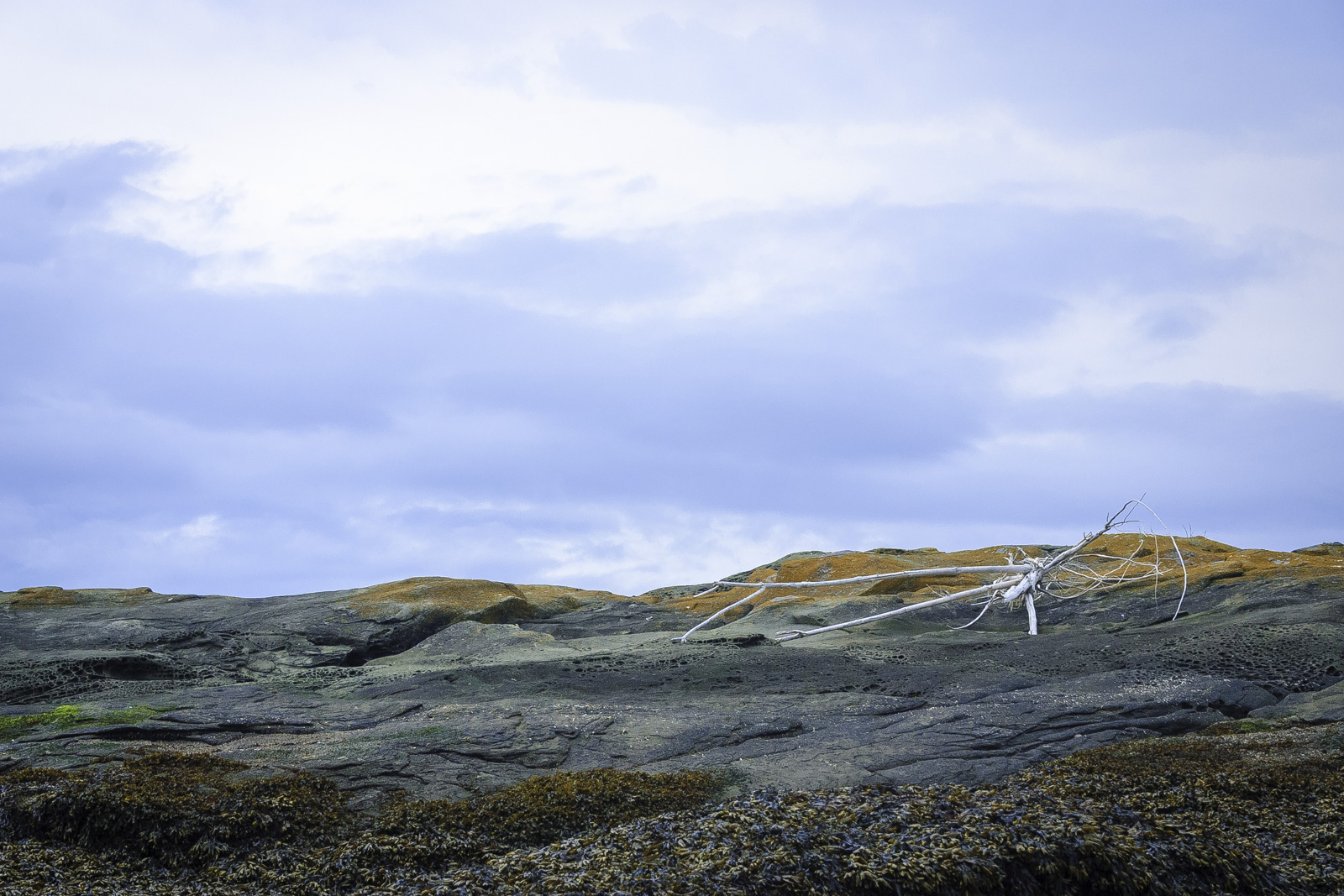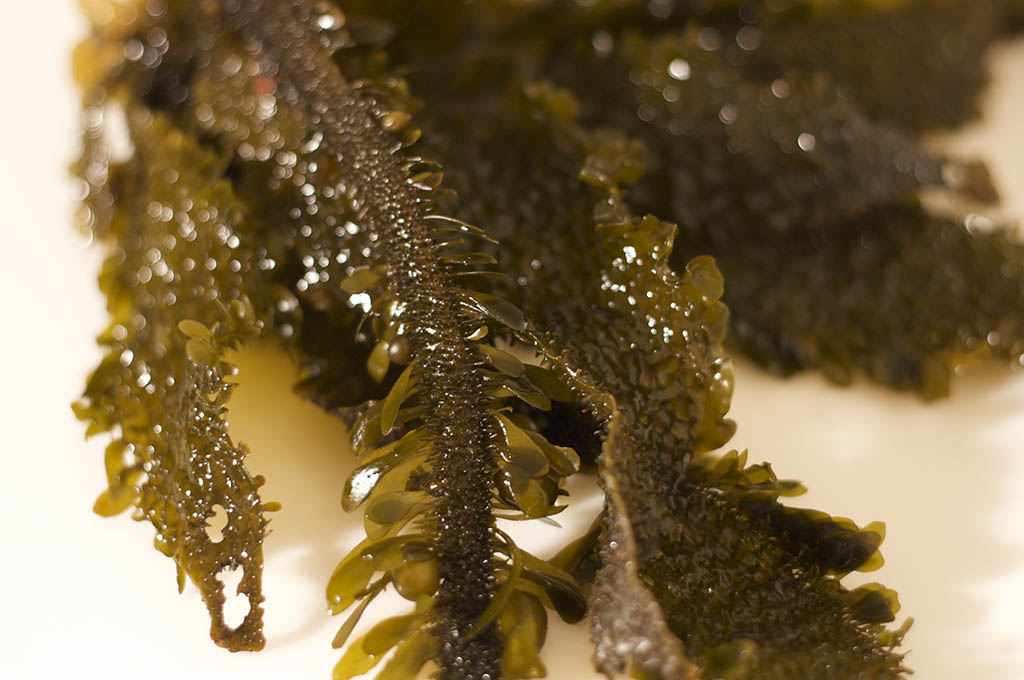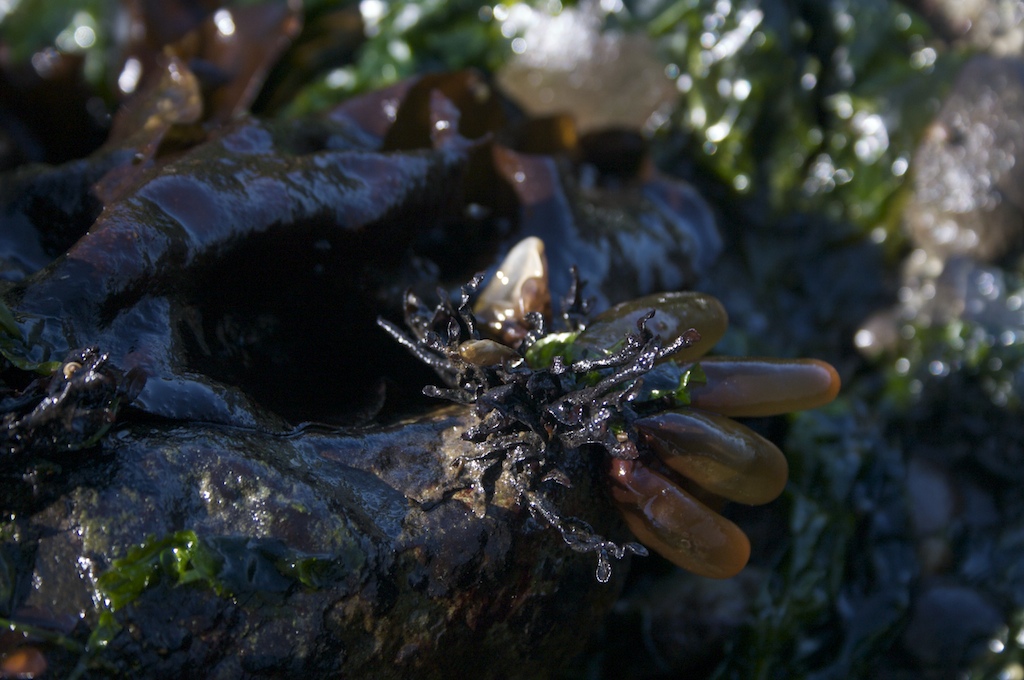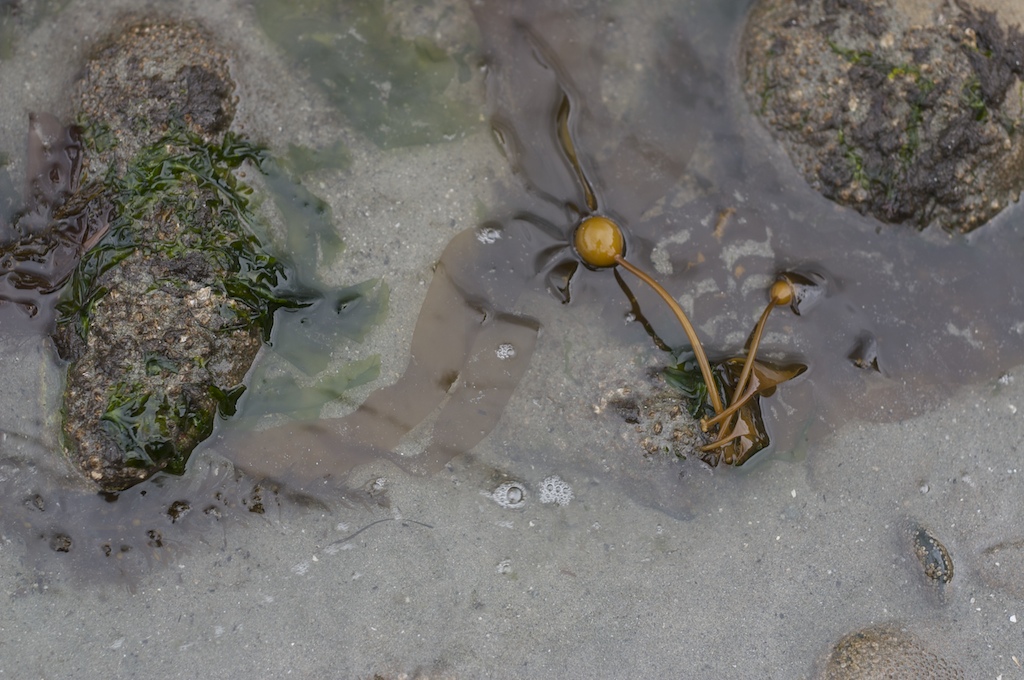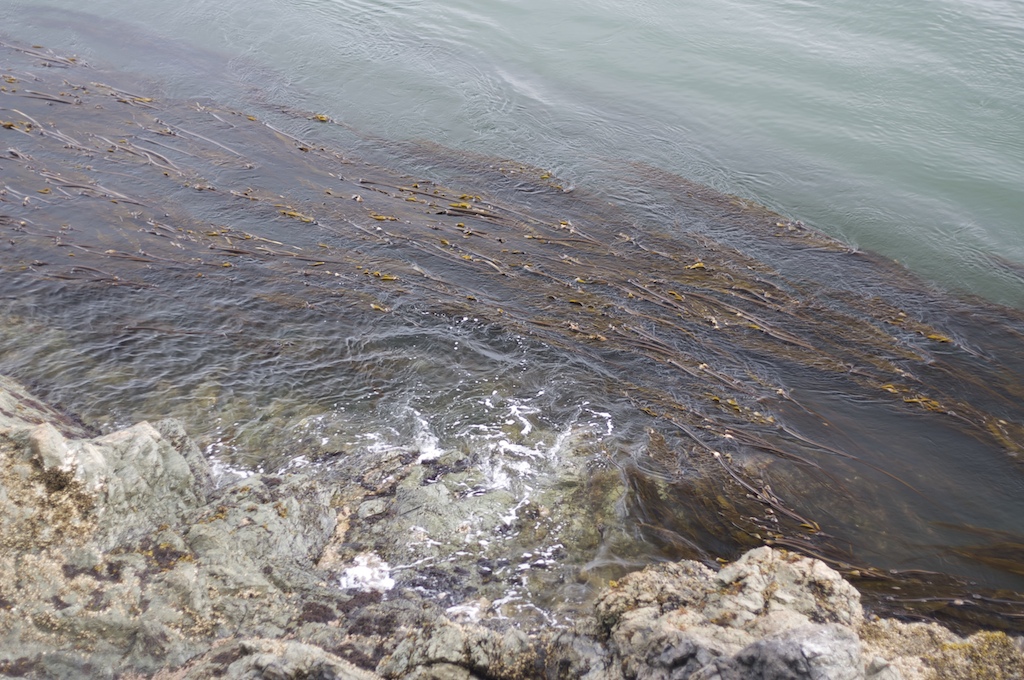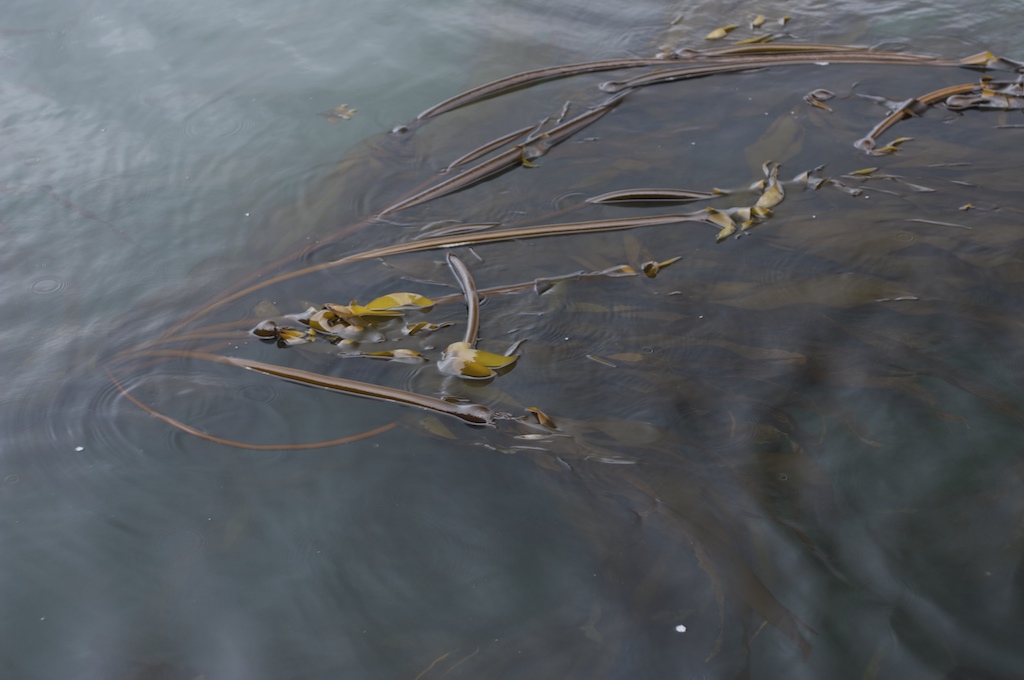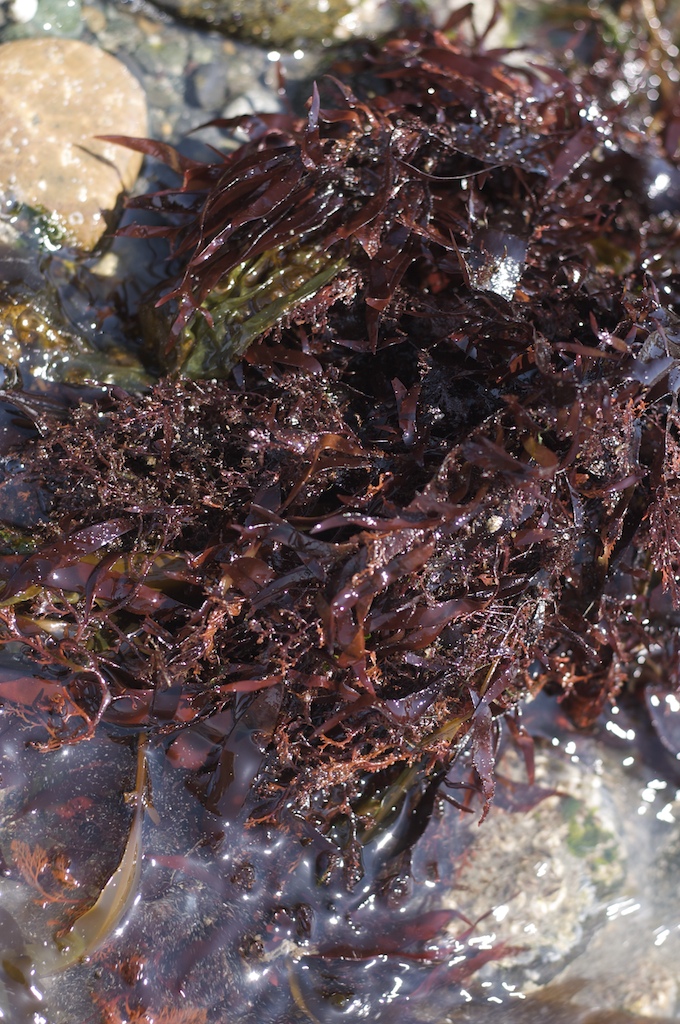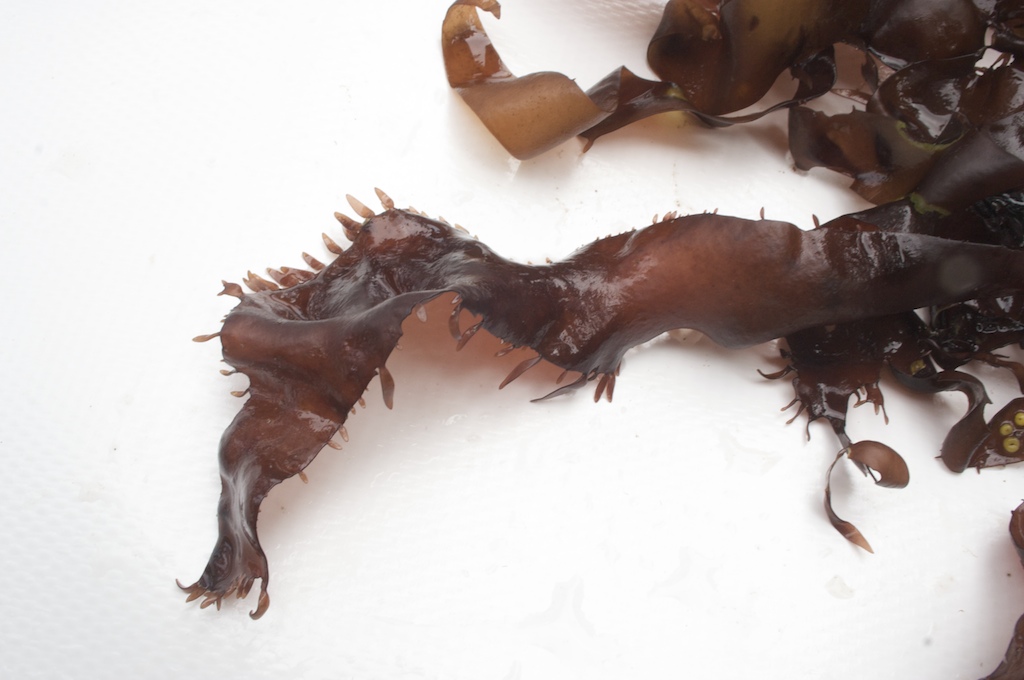Egregia menziesii
Color: Brown (Olive)
Shape: Branching, Bushy
Texture: Bumpy
Size: Up to 30’+
Zone: Low Intertidal to Subtidal
Range: British Columbia to Mexico
Description: This flamboyant seaweed consists of a thick midrib, fringed with small irregular blades on either side that are interspersed with round floats. Feather Boa has a large, branching holdfast and a stipe that is round at the holdfast, then branches and broadens to be an inch or two wide. Feather Boa can grow quite long.
Edibility:
Distinctive characteristics:
Collection notes:
Phylum: Phaeophyta (Brown Algae)
Previous names: Fucus menziesii
Similar species:
